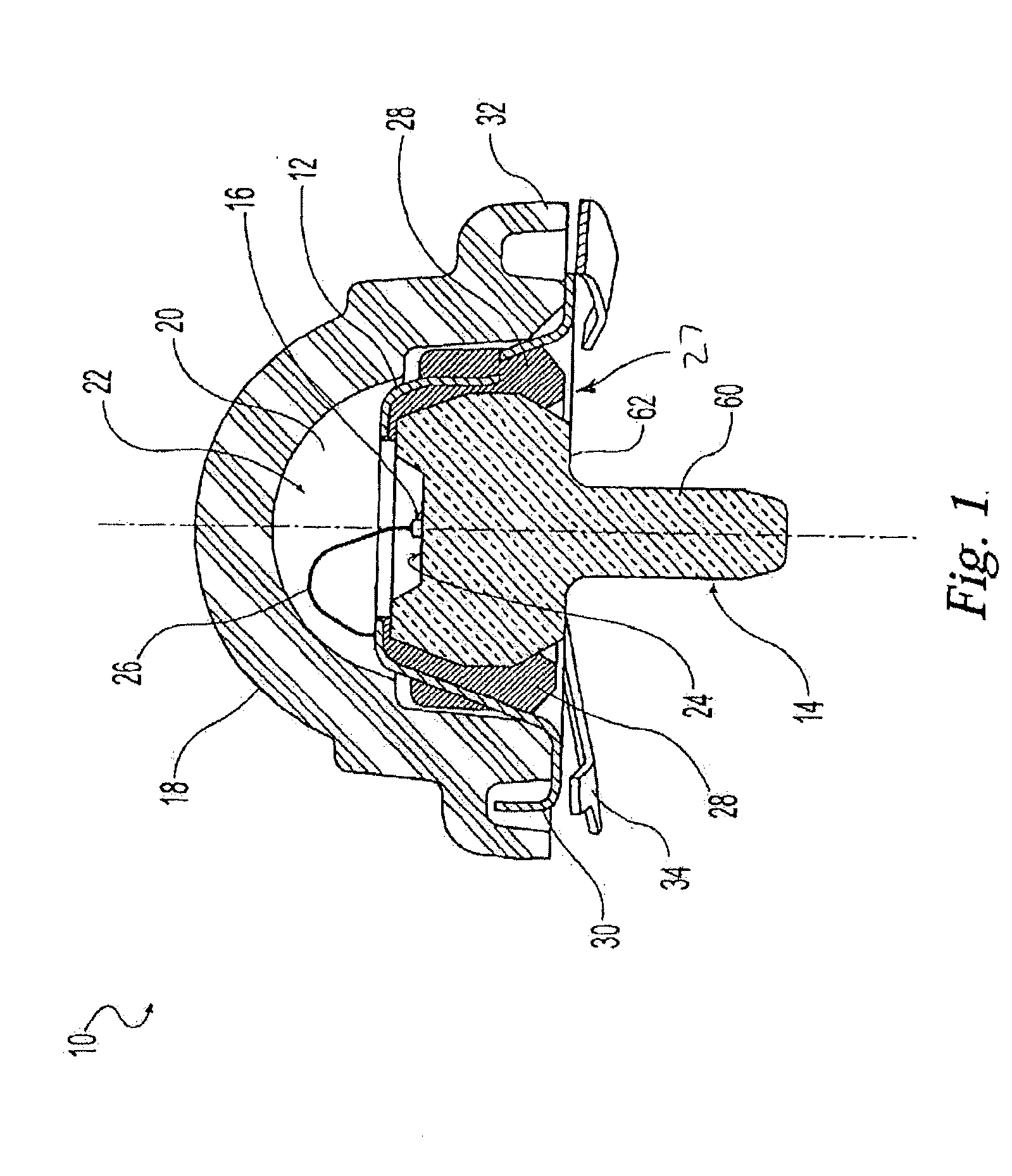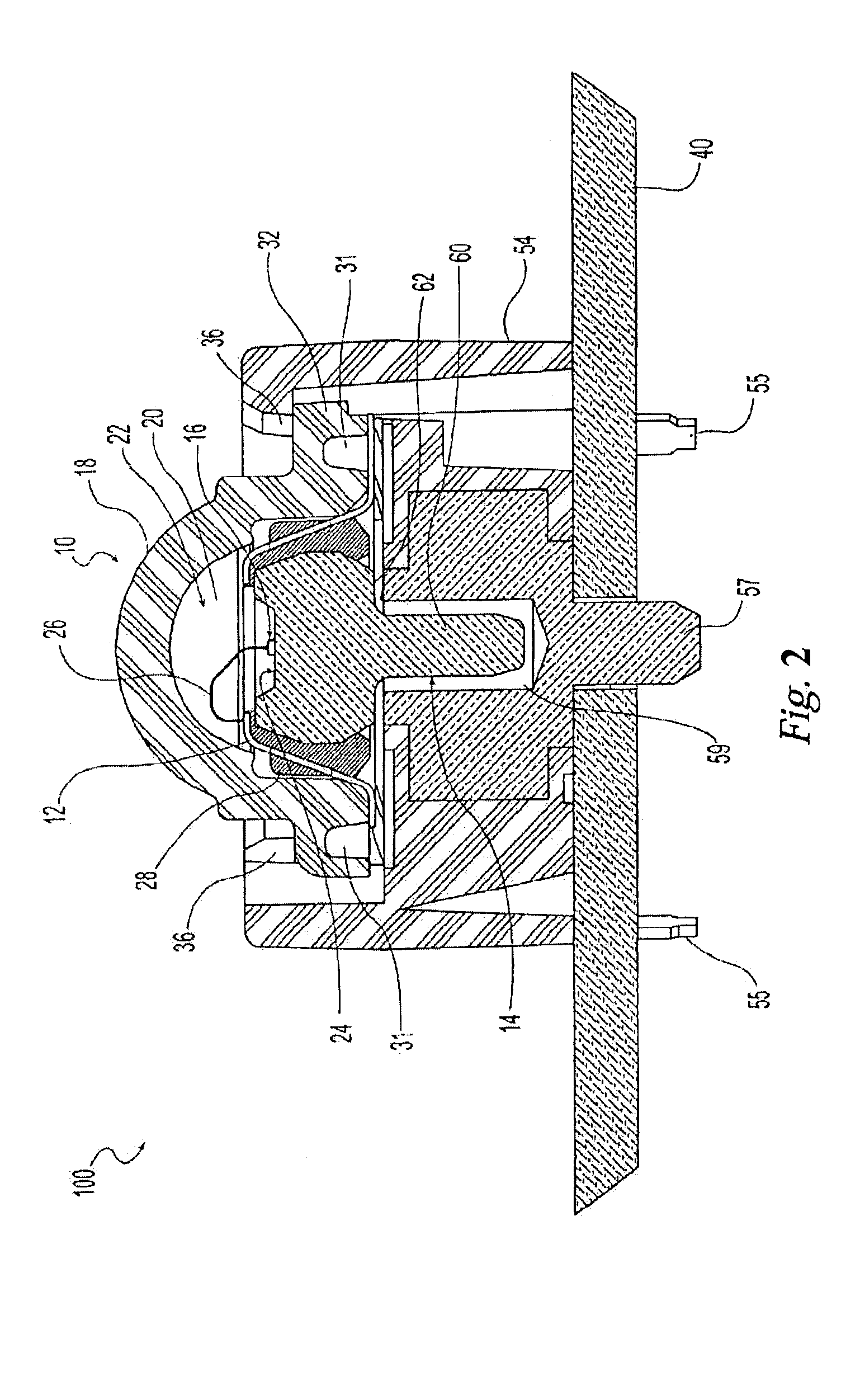High power light emitting diode
a light-emitting diode, high-power technology, applied in semiconductor devices for light sources, lighting and heating apparatuses, transportation and packaging, etc., can solve the problems of imposing mechanical stress on various internal components, not 100% efficient in converting electrical energy to light, and a large amount of heat produced by led dies
- Summary
- Abstract
- Description
- Claims
- Application Information
AI Technical Summary
Problems solved by technology
Method used
Image
Examples
Embodiment Construction
)
[0048] With reference to FIGS. 1-4, an LED package 10 of a system 100 is shown. The LED package 10 comprises an annular contact 12, a base contact, 14, an LED die 16, and a lens 18. The annular contact 12 and base contact 14 may each be configured as either an anode or as a cathode for the LED die 16, as desired. An optical material 20 may be located in a cavity 22 defined by the annular contact 12, the base contact 14, and the lens 18. The optical material 20 may be a silicone material, a gel or grease, a non-resilient material, a non-liquid material, or the like. In other embodiments the cavity 22 may contain a liquid, viscous, resilient, rigid or solid optical material 20 or may not contain any material. The optical material 20 may be "UV-stable" to resist degradation due to exposure to ultraviolet radiation, such as from sunlight.
[0049] The LED die 16 may be coupled to the annular contact 12 via a wire bonding 26. The LED die 16 may also be coupled to a die cup 24 of the base c...
PUM
 Login to View More
Login to View More Abstract
Description
Claims
Application Information
 Login to View More
Login to View More - R&D
- Intellectual Property
- Life Sciences
- Materials
- Tech Scout
- Unparalleled Data Quality
- Higher Quality Content
- 60% Fewer Hallucinations
Browse by: Latest US Patents, China's latest patents, Technical Efficacy Thesaurus, Application Domain, Technology Topic, Popular Technical Reports.
© 2025 PatSnap. All rights reserved.Legal|Privacy policy|Modern Slavery Act Transparency Statement|Sitemap|About US| Contact US: help@patsnap.com



